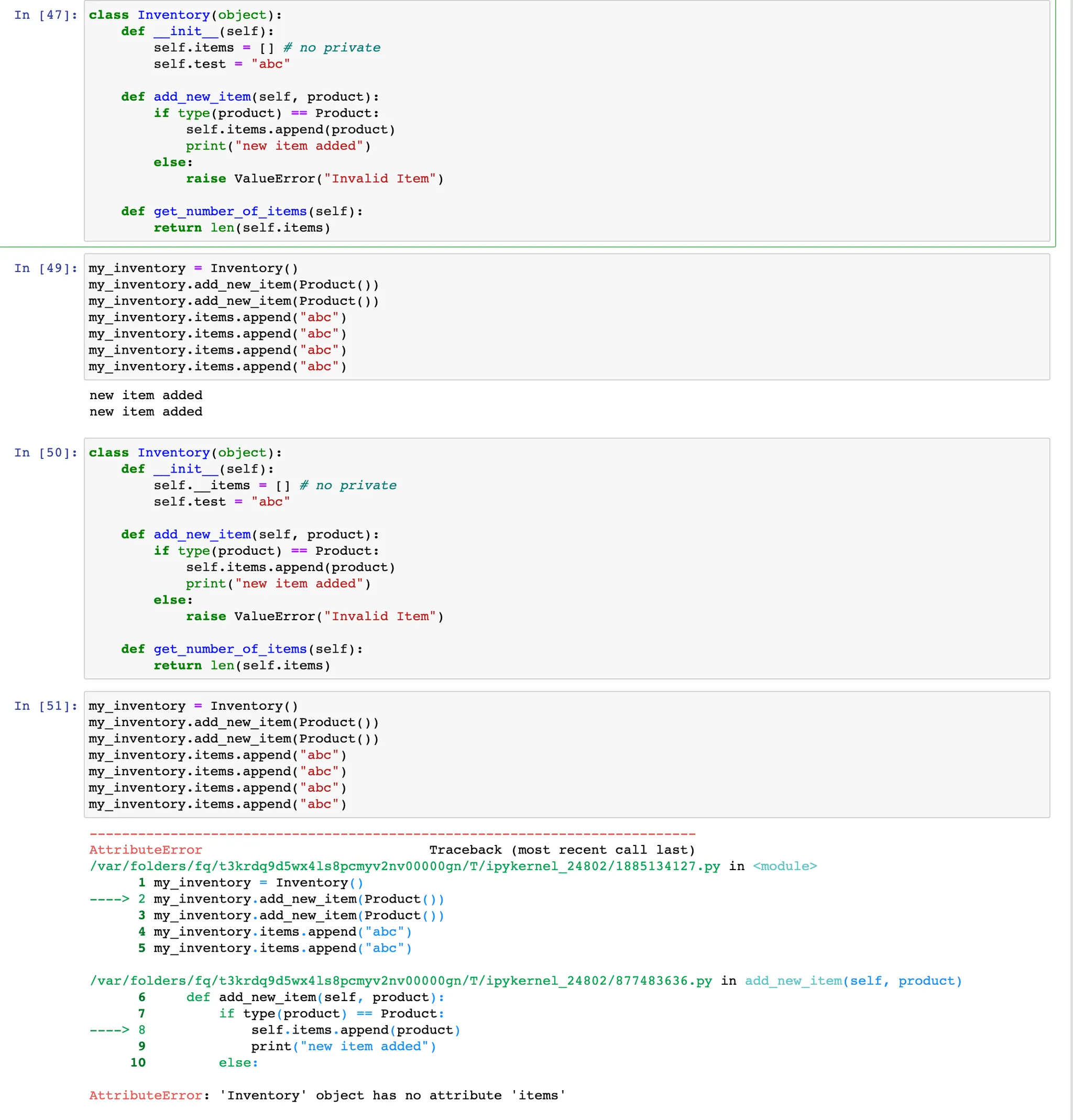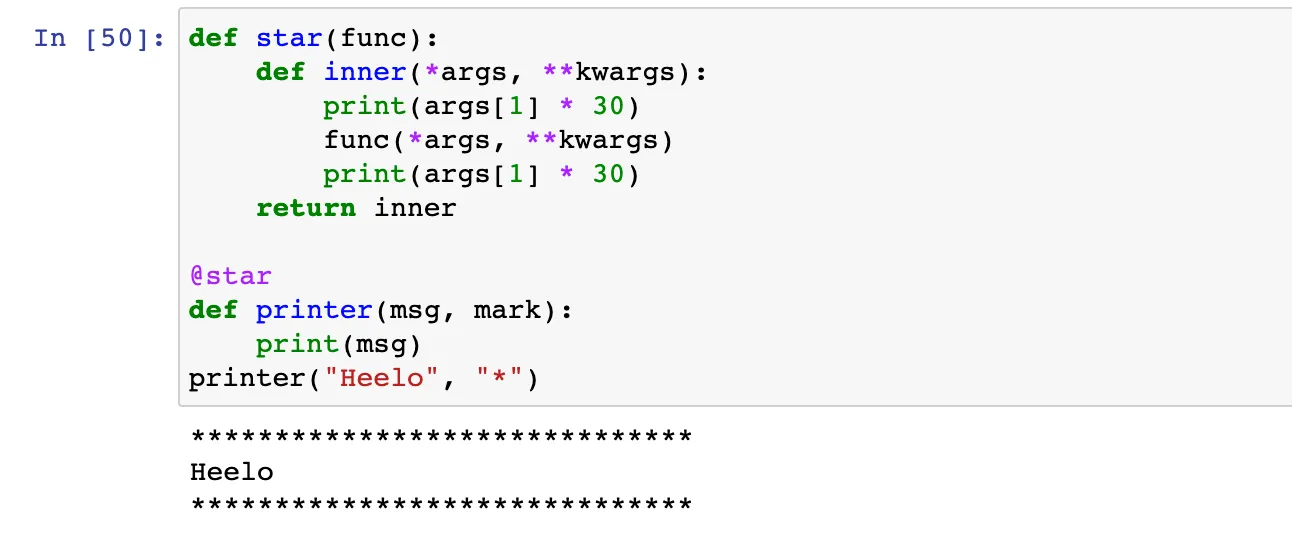Python Object Oriented Programming
객체지향 프로그래밍 개요
•
Object-Oriented Programming, OOP
•
객체 : 실생활에서 일종의 물건
◦
속성(Attribute) 와 행동(Action) 을 가짐
•
OOP 는 이러한 객체 개념을 프로그램으로 표현
◦
속성은 변수(Variable), 행동은 함수(Method) 로 표현됨
•
파이썬 역시 객체 지향 프로그램 언어
ex)
•
인공지능 축구 프로그램을 작성한다고 가정
•
객체 종류 : 팀, 선수, 심판, 공
•
Action
◦
선수 - 공을 차다, 패스하다
◦
심판 - 휘슬을 불다, 경고를 주다
•
Attribute
◦
선수 - 선수 이름, 포지션, 소속팀
◦
팀 - 팀 이름, 팀 연고지, 팀소속 선수
•
OOP 는 설계도에 해당하는 클래스(class) 와 실제 구현체인 인스턴스(instance) 로 나눈다
◦
Class - 붕어빵틀
◦
인스턴스 - 붕어빵
Objects in Python
파이썬 naming rule
•
ex) CamelCase ⇒ 파이썬 Class 명에 사용
•
ex) snake_case ⇒ 파이썬 함수/변수명에 사용
Attribute 추가하기
•
Attribute(속성) 추가는 __ init __ , self 와 함께
•
__ init __ 은 객체 초기화 예약함수
# 축구 선수 정보를 class로 구현하기
class SoccerPlayer(object): # object -> 상속받는 객체명
def __init__(self, name, position, back_number):
self.name = name
self.position = position
self.back_number = back_number
def change_back_number(self, new_number):
print("Player Back Number Change!! : From %d to %d" % (self.back_number, new_number))
self.back_number = new_number
Python
복사
__ 의미
•
__ 는 특수한 예약 함수나 변수 그리고 함수명 변경(맨글링)으로 사용
◦
ex) __ main __ , __ add __ , __ str __ , __eq __
method 구현하기
•
method(Action) 추가는 기존 함수와 같으나, 반드시 self 를 추가해야만 class 함수로 인정된다
•
self → 생성된 인스턴스 (클래스 안에서는)
abc.change_back_number(9)
print(abc)
park.back_number = 7
print(park)
Python
복사
OOP Implementation Example
•
구현가능한 OOP 만들기 - 노트북
# 클래스 Note
class Note(object):
def __init__(self, content = None):
self.content = content
def write_content(self, content):
self.content = content
def remove_all(self):
self.content = ""
def __add__(self, other):
return self.content + other.content
def __str__(self):
return self.content
# 클래스 NoteBook
class NoteBook(object):
def __init__(self, title):
self.title = title
self.page_number = 1
self.notes = {}
def add_note(self, note, page = 0):
if self.page_number < 300:
if page == 0:
self.notes[self.page_number] = note
self.page_number += 1
else:
self.notes = {page : note}
self.page_number += 1
else:
print("Page가 모두 채워졌습니다.")
def remove_note(self, page_number):
if page_number in self.notes.keys():
return self.notes.pop(page_number)
else:
print("해당 페이지는 존재하지 않습니다.")
def get_number_of_pages(self):
return len(self.notes.keys())
Python
복사
상속 (Inheritance)
•
부모 클래스로 부터 속성과 메소드를 물려받은 자식 클래스를 생성하는 것
•
super().__init__. → 부모 객체 init 불러온다
class Person(object):
def __init__(self, name, age):
self.name = name
self.age = age
def __str__(self):
return "My name is {0}! Age is {1}!".format(
self.name, self.age
)
class Korean(Person): # 상속해준다
pass
first_korean = Korean("ASH ISLAND", 22)
print(first_korean)
class Employee(Person):
def __init__(self, name, age, gender, salary, hire_date):
super().__init__(name, age, gender) # 부모객체 사용
self.salary = salary
self.hire_date = hire_date
def do_work(self):
print("Hard working..")
def about_me(self): # 부모 클래스 함수 재정의
super().about_me() # 부모 클래스 함수 사용
print("My Salary is ", self.salary, "and, My Hire date is ", self.hire_date, ".")
Python
복사
다형성 (Polymorphism)
•
같은 이름 메소드의 내부 로직을 다르게 작성
•
Dynamic Typing 특성으로 인해 파이썬에서는 같은 부모클래스의 상속에서 주로 발생함
•
중요한 OOP의 개념 그러나 너무 깊게 알 필요 X
class Animal:
def __init__(self, name):
self.name = name
def talk(self): # Abstract method, defined by convention only
raise NotImplementedError("Subclass must implement abstrac method")
class Cat(Animal):
def talk(self):
return 'Meow!'
class Dog(Animal):
def talk(self):
return 'Woof! Woof!'
animals = [Cat('Missy'), Cat('Mr.Mistoffelees'), Dog('Lassie')]
for animal in animals:
print(animal.name + ': ' + animal.talk())
Python
복사
가시성 (Visibility)
•
객체의 정보를 볼 수 있는 레벨을 조절하는것
•
누구나 객체 안에 모든 변수를 볼 필요가 없음
◦
객체를 사용하는 사용자가 임의로 정보 수정
◦
필요 없는 정보에는 접근할 필요가 없음
◦
만약 제품으로 판매한다면? 소스의 보호
self.__items ⇒ Private 변수로 선언, 타객체가 접근 못한다
@property : property decorator 숨겨진 변수를 반환하게 해줌
class Inventory(object):
def __init__(self):
self.__items = [] # no private
self.test = "abc"
def add_new_item(self, product):
if type(product) == Product:
self.items.append(product)
print("new item added")
else:
raise ValueError("Invalid Item")
def get_number_of_items(self):
return len(self.items)
@property
def items(self):
return self.__items
Python
복사
decorate
•
First-class objects
◦
일등함수 또는 일급객체
◦
변수나 데이터 구조에 할당이 가능한 객체
◦
파라미터로 전달이 가능 + 리턴값으로 사용
→ 파이썬의 함수는 일급함수
def square(x):
return x * x
f = square
f(5)
Python
복사
•
Inner function
◦
함수 내에 또 다른 함수가 존재
◦
closures : inner function을 리턴값으로 반환
def print_msg(msg):
def printer():
print(msg)
printer()
print_msg("Hello, Python")
Python
복사
def print_msg(msg):
def printer():
print(msg)
return printer
another = print_msg("Hello, Python")
another()
Python
복사
•
Decorator function
•
closure
# closure example
def tag_func(tag, text):
text = text
tag = tag
def inner_func():
return '<{0}>{1}<{0}>'.format(tag, text)
return inner_func
h1_func = tag_func('title', "This is Python Class")
p_func = tag_func('p', "Data Academy")
Python
복사
•
복잡한 클로져 함수를 간단하게
decorator function
def generate_power(exponent):
def wrapper(f):
def inner(*args):
result = f(*args)
return exponent**result
return inner
return wrapper
@generate_power(2)
def raise_two(n):
return n**2
print(raise_two(7))
Python
복사



